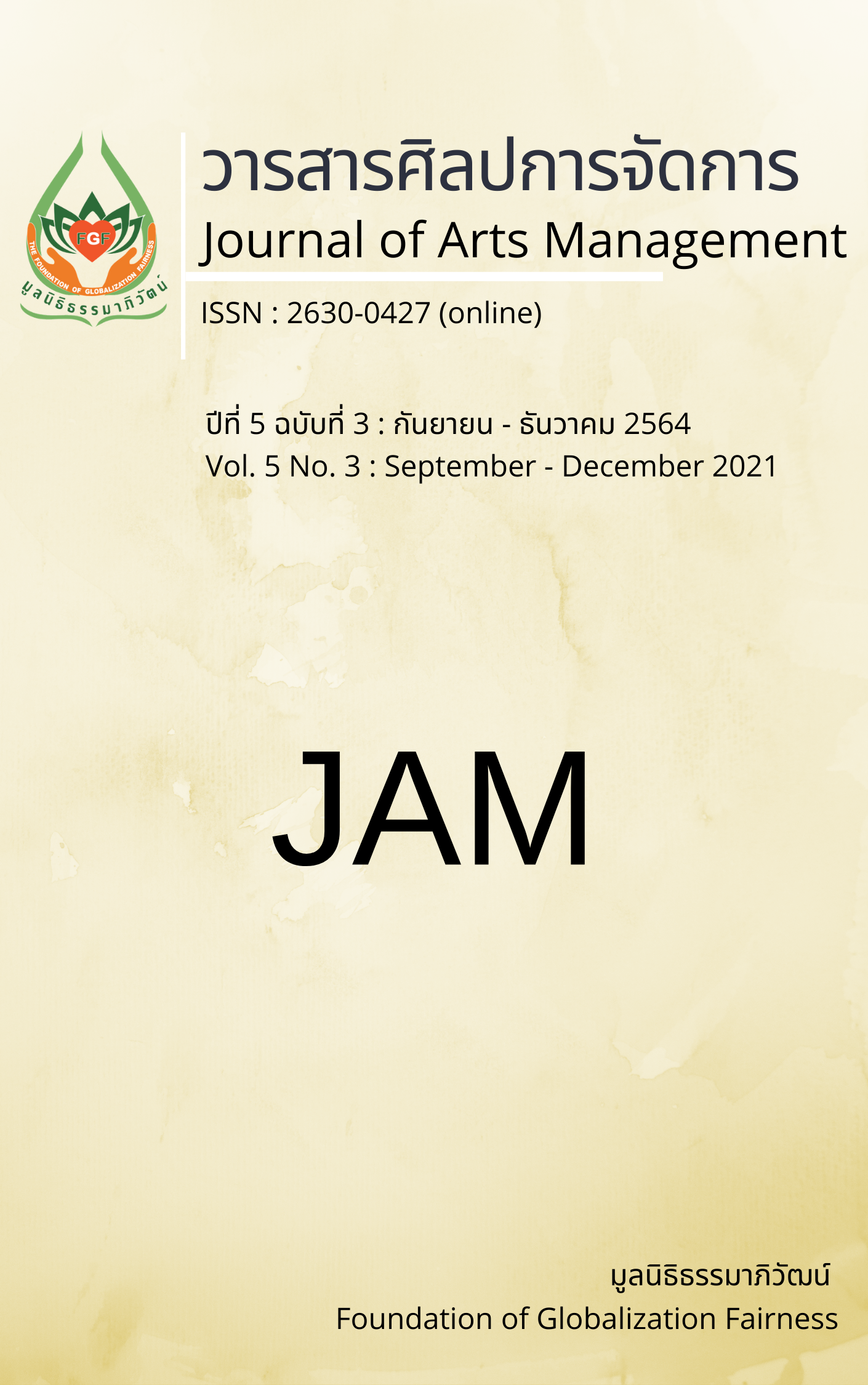Approaches to Safe Tourism Management for Tourists in Tumbon Koh Yo, Amphoe Mueang, Songkhla, Thailand
Main Article Content
Abstract
This article aimed to (1) study factors affecting safety tourism perceptions of tourists in Tumbon Koh Yo, Amphoe Mueang, Songkhla, Thailand; and (2) design a safe tourism model for tourists in Tumbon Koh Yo. The samples of this qualitative research were 309 tourists who were traveling in Tumbon Koh Yo. They were selected by accidental sampling. The instrument for collecting data was the questionnaire to survey the tourists’ opinions on the factors affecting safety tourism perceptions. The data were analyzed using descriptive statistics and the structural model.
The research results were found as follows: The safe tourism model for tourists in Tumbon Koh Yo, Amphoe Mueang, Songkhla, Thailand requires an emphasis on general facilities of which practicality is based on the universal design concept which includes the arrangement of parking spaces for the disabled, noticeable signboards that can be seen clearly day and night, and doors which are wide enough to allow wheelchair access. In response to the preventive measures for COVID-19, hand sanitizer gel or alcohol should be placed at various service areas, and users of buildings should be kept informed regularly about COVID-19 prevention guidelines. In terms of fire prevention, firefighting equipment such as fire extinguishers, fire hose cabinets, fire sprinklers or nozzles, emergency signal lights, and fire alarms should be made available; and a fire escape and an assembly point should also be provided. In this regard, the arrangements will add value to tourism, and promote the sustainability of safe tourism in Tumbon Koh Yo, Amphoe Mueang, Songkhla, Thailand.
Article Details
Views and opinions appearing in articles in the Journal of Arts of Management It is the responsibility of the author of the article. and does not constitute the view and responsibility of the editorial team I agree that the article is copyright of the Arts and Management Journal.
References
Arbuckle, J. L. (2011). IBM SPSS Amos 20 user’s guide. IBM Corporation.
Bangkokbiznews. (2020, June 16). Guidelines to revive tourism after the Covid-19 crisis, Bangkokbiznews. https://www.bangkokbiznews.com/news/885171
Bangkokbiznews. (2020, April 28). State-private' to enhance the safety prepare to launch the symbol ‘safety-health’. Bangkokbiznews. https://www.bangkokbiznews.com/news/detail/878087
Chamnina, E. (2020). Tourism safety management in Phuket. Journal of MCU Nakhondhat, 7(8), 174-189.
Department of Health Service Support, Ministry of Health & The Association of Siamese Architects under Royal Patronage. (2020, June 23). Building management and facilities for safety from COVID-19 infection. The Association of Siamese Architects under Royal Patronage. https://asa.or.th/handbook/covid-19/
Khongthong, P., & Meesawatdikul, W. (2019). Guidelines of tourism safety management of Hua-Hin, Prachuap Khiri Khan as tourist destination for foreign tourists. Dusit Thani College Journal, 13(1), 403-412.
Krejcie, R. V., & Morgan, D. W. (1970). Determining sample size for research activities. Educational and Psychological Measurement, 30(3), 607-610.
Ministry of Tourism and Sports. (2021, April 26). Special ASEAN tourism ministers meeting on coronavirus disease 2019 (COVID-19). https://www.mots.go.th/Newsview.php?nid=12639
Nunnally, J. C. (1978). Psychometric theory (2nd ed.). McGraw-Hill.
Ruengtam, P. (2020). Safety tourism modeling, Tumbon Koh Yo, Amphoe Mueang, Songkhla. Mahasarakham University.
Siamrath. (2020, April 10). COVID-19 impacts the Thai tourism sector as number one in the world. Siamrath. https://siamrath.co.th/n/146002
Tabachnick, B. G., & Fidell, L. S. (2001). Using multivariate statistics (4th ed.). Allyn & Bacon.
Thanapansiri, P. (2016). Management of life and property safety for tourists by Phuket tourist police. Phuket Rajabhat University Academic Journal, 12(1), 123-149.
Thaveeseng, H. et al. (2020). The potential of creative tourist destination in Satun province. Journal of Thai Hospitality and Tourism, 15(1), 3-16.
Wanitbancha, K. (2013). Structural equation analysis. Samlada.


